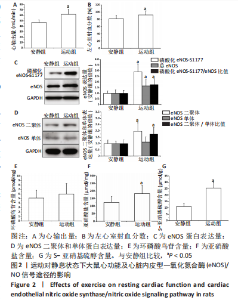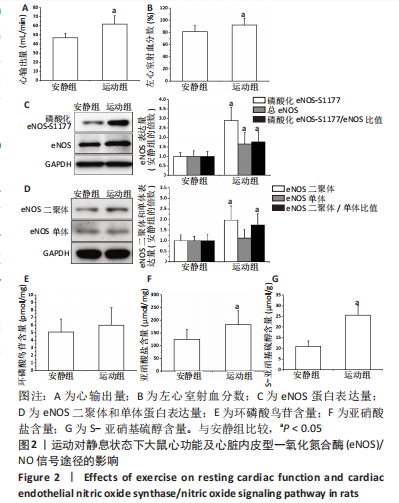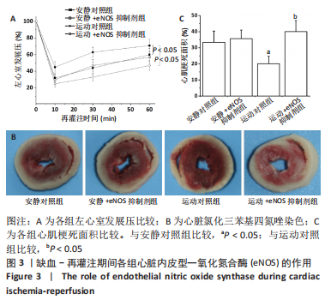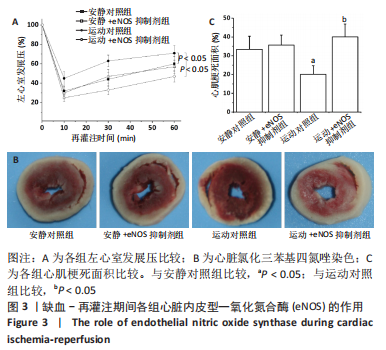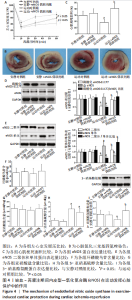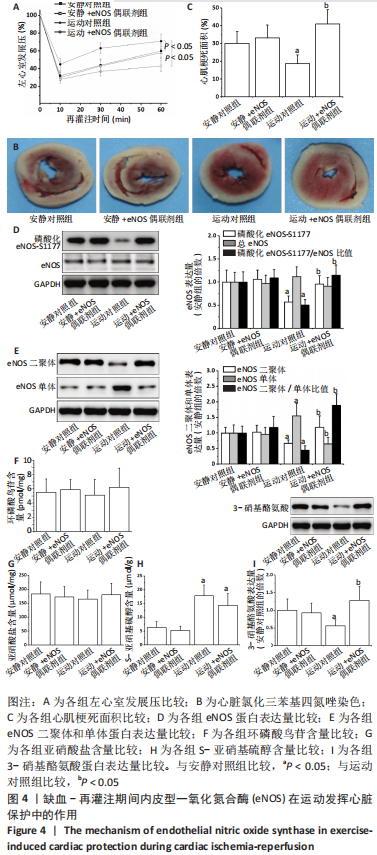[1] ORAL O. Nitric oxide and its role in exercise physiology. J Sports Med Phys Fitness. 2021;61(9):1208-1211.
[2] WU Y, DING Y, RAMPRASATH T, et al. Oxidative stress, gtpch1, and endothelial nitric oxide synthase uncoupling in hypertension. Antioxid Redox Signal. 2021;34(9):750-764.
[3] CHANNON KM. Tetrahydrobiopterin and nitric oxide synthase recouplers. Handb Exp Pharmacol. 2021;264:339-352.
[4] HONG FF, LIANG XY, LIU W, et al. Roles of eNOS in atherosclerosis treatment. Inflamm Res. 2019;68(6):429-441.
[5] FARIA A, PERSAUD SJ. Cardiac oxidative stress in diabetes: mechanisms and therapeutic potential. Pharmacol Ther. 2017;172:50-62.
[6] QUINDRY JC, FRANKLIN BA. Exercise preconditioning as a cardioprotective phenotype. Am J Cardiol. 2021;148:8-15.
[7] JONES SP, GREER JJ, KAKKAR AK, et al. Endothelial nitric oxide synthase overexpression attenuates myocardial reperfusion injury. Am J Physiol Heart Circ Physiol. 2004;286(1):H276-282.
[8] LEE JW, LEE DH, PARK JK, et al. Sodium nitrite-derived nitric oxide protects rat testes against ischemia/reperfusion injury. Asian J Androl. 2018;21(1):92-97.
[9] WANG C, QIAO S, HONG L, et al. NOS cofactor tetrahydrobiopterin contributes to anesthetic preconditioning induced myocardial protection in the isolated ex vivo rat heart. Int J Mol Med. 2020;45(2):615-622.
[10] SANTANA M, SOUZA DS, MIGUEL-DOS-SANTOS R, et al. Resistance exercise mediates remote ischemic preconditioning by limiting cardiac eNOS uncoupling. J Mol Cell Cardiol. 2018;125:61-72.
[11] COUTO GK, PAULA SM, GOMES-SANTOS IL, et al. Exercise training induces eNOS coupling and restores relaxation in coronary arteries of heart failure rats. Am J Physiol Heart Circ Physiol. 2018;314(4):H878-887.
[12] HASEGAWA N, FUJIE S, HORII N, et al. Effects of different exercise modes on arterial stiffness and nitric oxide synthesis. Med Sci Sports Exerc. 2018;50(6):1177-1185.
[13] FARAH C, NASCIMENTO A, BOLEA G, et al. Key role of endothelium in the eNOS-dependent cardioprotection with exercise training. J Mol Cell Cardiol. 2017;102:26-30.
[14] ACIKEL ELMAS M, CAKICI SE, DUR IR, et al. Protective effects of exercise on heart and aorta in high-fat diet-induced obese rats. Tissue Cell. 2019;57:57-65.
[15] 王英伟,曹永刚,孟丽娜,等.游泳对心肌梗死大鼠心脏微血管的保护作用及机制研究[J].中国康复医学杂志,2021,36(9):1060-1067.
[16] PREEDY M, BALIGA RS, HOBBS AJ. Multiplicity of nitric oxide and natriuretic peptide signaling in heart failure. J Cardiovasc Pharmacol. 2020;75(5):370-384.
[17] ZHAO S, SONG TY, WANG ZY, et al. S-nitrosylation of Hsp90 promotes cardiac hypertrophy in mice through GSK3β signaling. Acta Pharmacol Sin. 2022;43(8):1979-1988.
[18] 朱政,付常喜,马文超,等.有氧运动调控自发性高血压模型大鼠心脏重塑的机制[J].中国组织工程研究,2022,26(14):2231-2237.
[19] 王晓梅,李正红,夏满莉,等.不同浓度硝酸甘油对心脏缺血/再灌注的作用及ALDH2的作用[J].中国老年学杂志,2011,31(23):4597-4599.
[20] 付常喜,李平,秦永生,等.高强度间歇训练对自发性高血压大鼠肾脏纤维化的影响[J].山东体育学院学报,2020,36(3):75-82.
[21] CHEN CA, DRUHAN LJ, VARADHARAJ S, et al. Phosphorylation of endothelial nitric-oxide synthase regulates superoxide generation from the enzyme. J Biol Chem. 2008;283(40):27038-27047.
[22] ARAGÓN JP, CONDIT ME, BHUSHAN S, et al. Beta3-adrenoreceptor stimulation ameliorates myocardial ischemia-reperfusion injury via endothelial nitric oxide synthase and neuronal nitric oxide synthase activation. J Am Coll Cardiol. 2011; 58(25):2683-2691.
[23] DUMITRESCU C, BIONDI R, XIA Y, et al. Myocardial ischemia results in tetrahydrobiopterin (BH4) oxidation with impaired endothelial function ameliorated by BH4. Proc Natl Acad Sci U S A. 2007;104(38):15081-15086.
[24] MITSUHASHI T, UEMOTO R, ISHIKAWA K, et al. Endothelial nitric oxide synthase-independent pleiotropic effects of pitavastatin against atherogenesis and limb ischemia in mice. J Atheroscler Thromb. 2018;25(1):65-80.
[25] TOTZECK M, KORSTE S, MIINALAINEN I, et al. S-nitrosation of calpains is associated with cardioprotection in myocardial I/R injury. Nitric Oxide. 2017;67:68-74.
[26] FERRER-SUETA G, CAMPOLO N, TRUJILLO M, et al. Biochemistry of peroxynitrite and protein tyrosine nitration. Chem Rev. 2018;118(3):1338-1408.
[27] GONG DS, SHARMA K, KANG KW, et al. Endothelium-dependent relaxation effects of actinidia arguta extracts in coronary artery: involvement of eNOS/Akt pathway. J Nanosci Nanotechnol. 2020;20(9):5381-5384.
[28] WU MY, YIANG GT, LIAO WT, et al. Current mechanistic concepts in ischemia and reperfusion injury. Cell Physiol Biochem. 2018;46(4):1650-1667.
|
